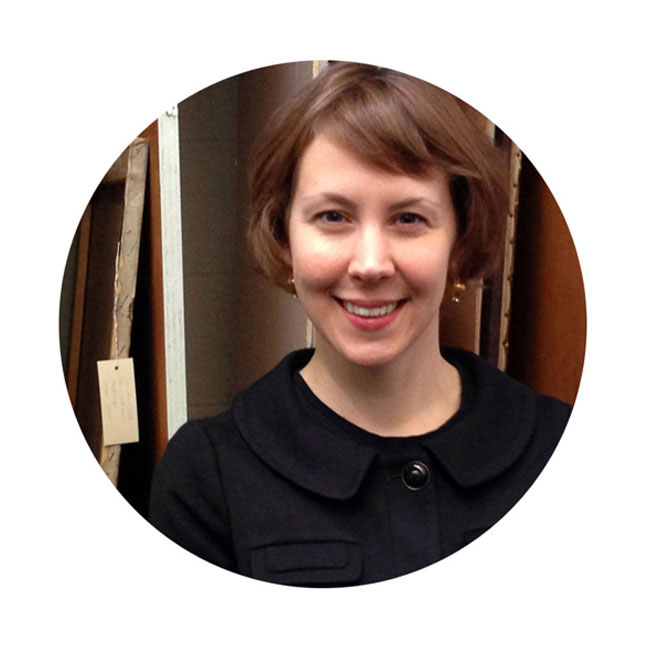The Harvard Art Museums have trained scores of museum leaders who have gone on to make remarkable contributions to the curatorial, conservation, and education fields. We offer a number of opportunities for emerging graduate and postgraduate scholars interested in the production and presentation of original scholarship within the museum context. In this regular series of interviews, we catch up with these museum professionals to see where they are in their career.
Louise Orsini was an advanced-level fellow in paintings conservation in the Straus Center for Conservation and Technical Studies from 2009 to 2011. Louise will be back on campus May 20, 2014, when she’ll present the research she did as a recipient of the Baird Fellowship.
Q What is your current position?
A Since April 2013, I have been assistant conservator in the Department of Paintings Conservation at the Museum of Fine Arts, Boston, where I treat a range of American and European paintings for in-house exhibitions and loans. I also conduct technical examinations and collaborate with our conservation scientists when in-depth analysis is required. Going on frequent courier trips to ensure the safe transport of museum objects is another great part of my job. Recent assignments have brought me to cities throughout Japan and France.
Q Can you tell us about your experience as a fellow in the Straus Center?
A I was extremely fortunate to have been awarded the Straus Center’s advanced-level fellowship in paintings conservation for two consecutive years. During the first fellowship I focused on frescoes (Lewis Rubenstein and Rico Lebrun’s Hunger March, in particular), and in the second on easel paintings. This rare opportunity allowed me to accomplish and grow a great deal. Being a part of the Straus Center team, under the keen guidance of paintings conservator Teri Hensick, is what I cherish most about my fellowship years.
While at the Straus I examined and treated numerous paintings from the permanent, portrait, and university loans collections, including Charles W. Peale’s portrait Thomas McKean (1735–1817). Additionally, Teri and I surveyed the collections in preparation for the reopening of the museums in 2014. There is no better way to get to know a collection than by spending hours in storage looking at the paintings one by one!
Q You received the Baird Fellowship to support a research project after your time at the Straus Center. Can you tell us about the work you did with that award?
A The recent renovation of the Harvard Art Museums provided an opportunity for the technical examination of Cézanne’s Still Life with Commode (c. 1887–88). Certain passages of the paint were suspected to be later repainting, but through close examination, including x-radiography and infrared reflectography, I found these passages to be consistent with Cézanne’s known practices. The project also included comparison with a rare second version of the still-life arrangement located at the Neue Staatsgalerie in Munich. I used the generous funding provided by the Baird Fellowship to travel to Munich as well as to France and London, where I viewed numerous other still lifes and met with art historians and conservators specializing in Cézanne.
Q How did your training at the Harvard Art Museums help you prepare for the work you are doing now?
A The museums provided a conservator’s ideal work environment: access to stellar collections, wide-ranging analytical capabilities, and the opportunity to work with and learn from curators, conservators, conservation scientists, and museum staff at the top of their respective fields. While at the Straus I was able to strike the perfect balance between time spent on in-depth research and hands-on treatment.
I am fortunate now to work in an institution with similar resources and am able to draw on my experiences at the Straus on a daily basis. In addition to molding my approach to conservation in general, the research and treatments I undertook at the Straus inform every project I’ve encountered since.
Q Was there a specific event during your training at the Harvard Art Museums that you found particularly powerful?
A Rather than a specific event, the relationships I forged while at the Straus are particularly meaningful to me. Not only have I established professional relationships that will continue to serve me throughout my career, I have formed deep friendships that enhance my life greatly.





